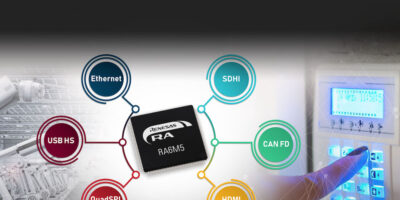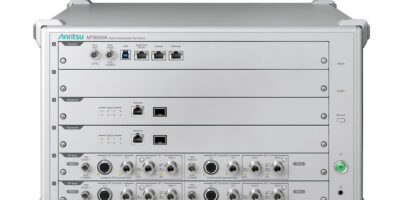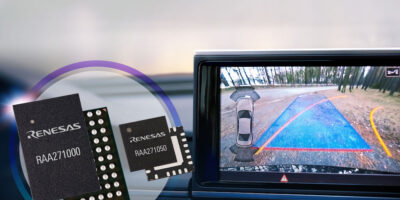The RA6M5 group of microcontrollers completes Renesas Electronics’ RA6 series Arm Cortex M33-based devices. The company has added 20 microcontrollers to complete the RA6 series. The RA6M5 group of microcontrollers offer communications options, generous on-chip memory, and what Renesas claims to be best-in-class security features.
Communications interface options include CAN FD, Ethernet MAC with DMA, USB full speed and high speed, and multiple serial interfaces. Renesas claims that designers of IoT systems will have “unmatched flexibility” in sharing critical data using the RA6M5 Group.
The new microcontrollers integrate up to 2Mbyte of on-chip flash and 512kbyte on-chip RAM. They also provide an OctaSPI which enables designers to extend the on-chip flash and RAM. The microcontrollers also support error correction code (ECC) in the RAM.
The memory block swap feature and intrinsic security in the RA devices are claimed to make the RA6M5 group particularly suitable for in-field firmware update applications. After new firmware is written to the flash using background operation, a selectable amount of 32kbyte flash blocks can be swapped to the new firmware.
The RA6M5 microcontrollers have an Arm Cortex-M33 core based on Armv8-M architecture. They feature Arm TrustZone technology and Renesas’ secure crypto engine. The engine incorporates multiple symmetric and asymmetric cryptography accelerators, advanced key management, security lifecycle management, power analysis resistance, and tamper detection.
They are also characterised by very Low power consumption of 107 microA/MHz in active mode (running the CoreMark algorithm from flash at 200MHz) and 30 microseconds wake up time.
The microcontrollers are scalable from 100- to 176-pin LQFP packages and also available in 176-ball BGAs.
The RA6M5 group is supported by the Flexible Software Package (FSP), which includes a best-in-class HAL driver, says Renesas. The FSP uses a graphical user interface (GUI) to simplify and accelerate the development process, while also making it easy for customers to transition from an original 8/16-bit microcontroller design. Designers using the RA6M5 microcontrollers also have access to the extensive Arm partner ecosystem, offering a wide range of tools that help speed time-to-market.
The RA6M5 microcontrollers and the EK-RA6M5 evaluation kit (RTK7EKA6M5S00001BE) are available now from Renesas and its worldwide distributors.







